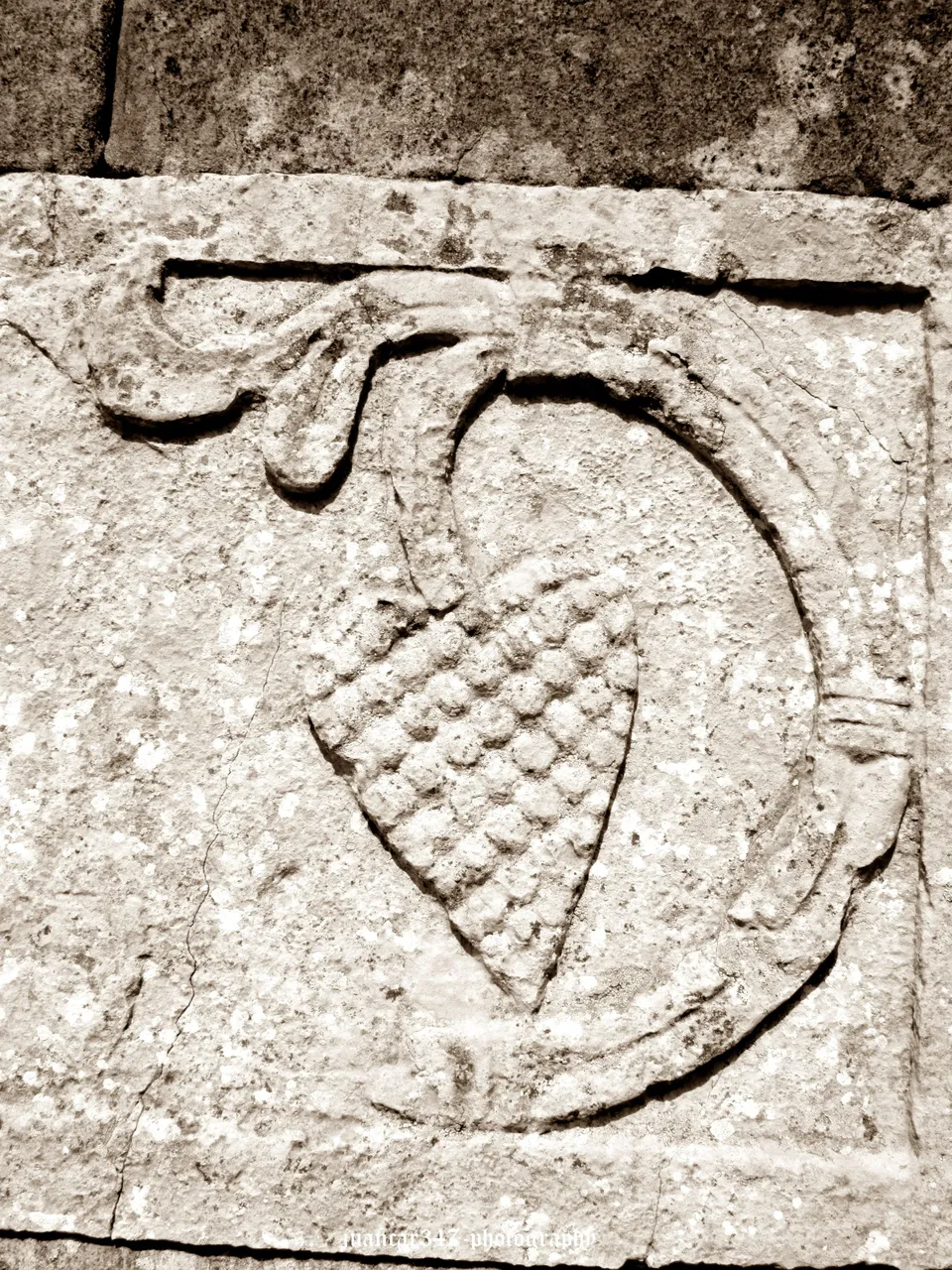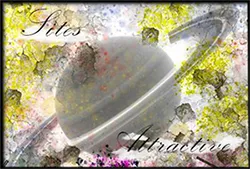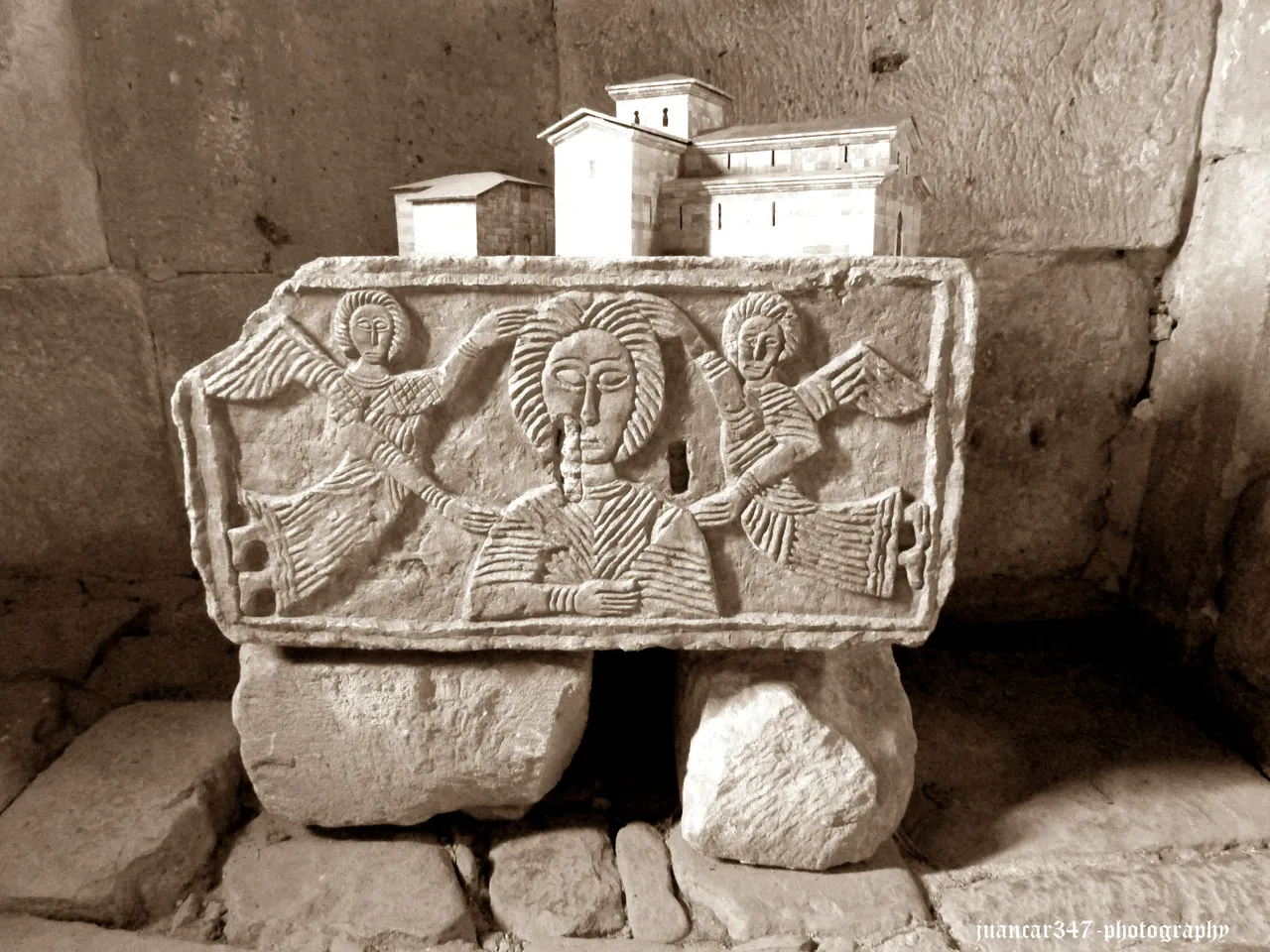
Although there are still some worthy vestiges, in reality there are not many examples of Visigothic architecture that survived in Spain after the Muslim invasion that occurred in the 7th century and subsequent and continuous bankruptcies, which even occurred in modern times.
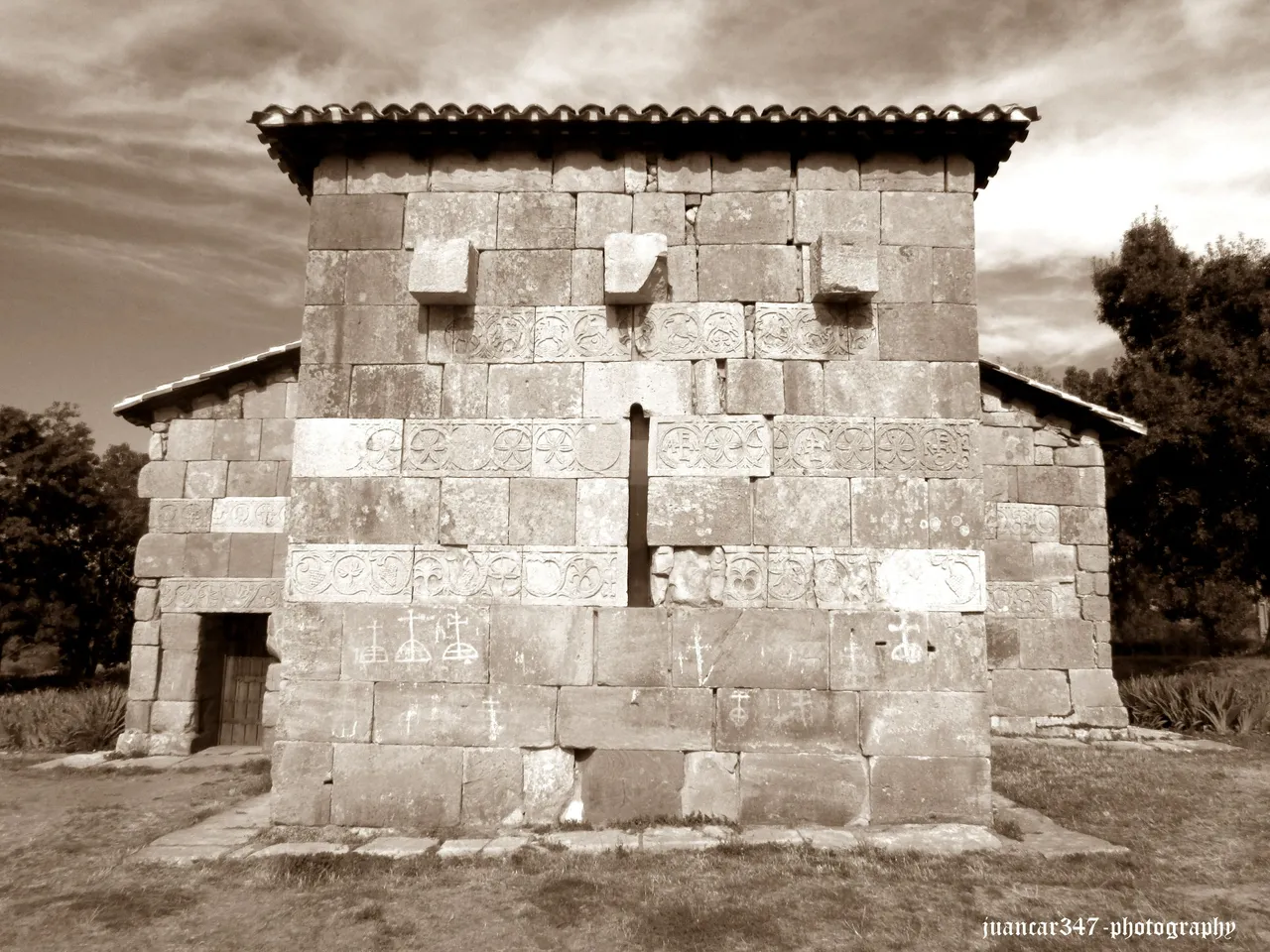
But they are, nevertheless, sufficient to give us an idea of what their sacred models were basically like and how, based on many of them, new ways of conceiving Sacred Geometry were adapted, adapting to the requirements and circumstances related to each era.
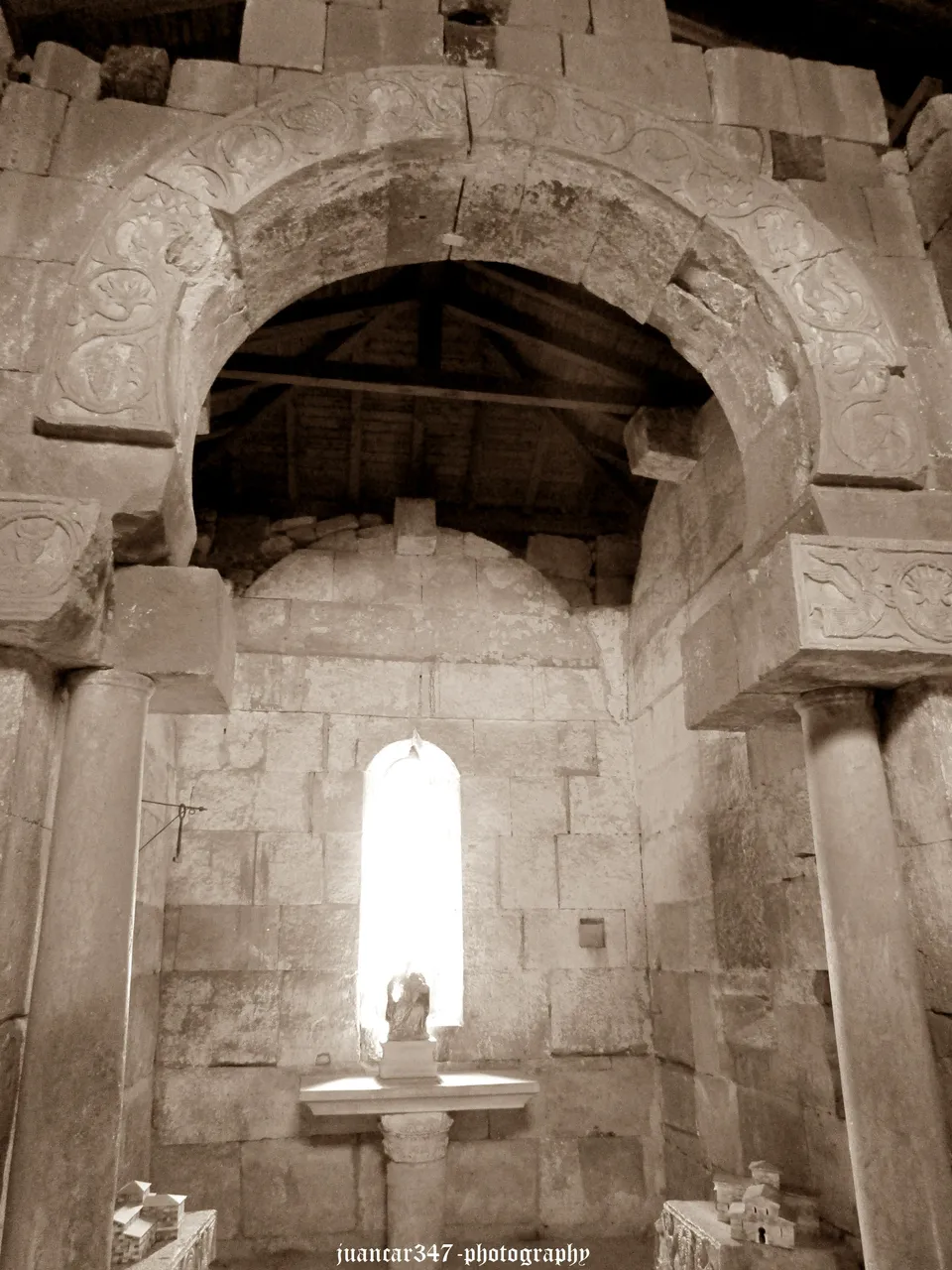
For example, we could suggest that the basilical shape of the plan of their churches continued to be maintained, especially in the great monasteries, once the resistant Spain of the North was consolidated, the old Roman roads opened with the discovery of the supposed tomb of the Apóstol Saint James and resumed a traffic, through which there is no doubt that both Benedictines and Cistercians entered, whose architects or Magister Muri, were involved in the remarkable mission of raising some monasteries, which in many cases surprise, not only because of their beauty but also for its elegance, magnitude and proportion.
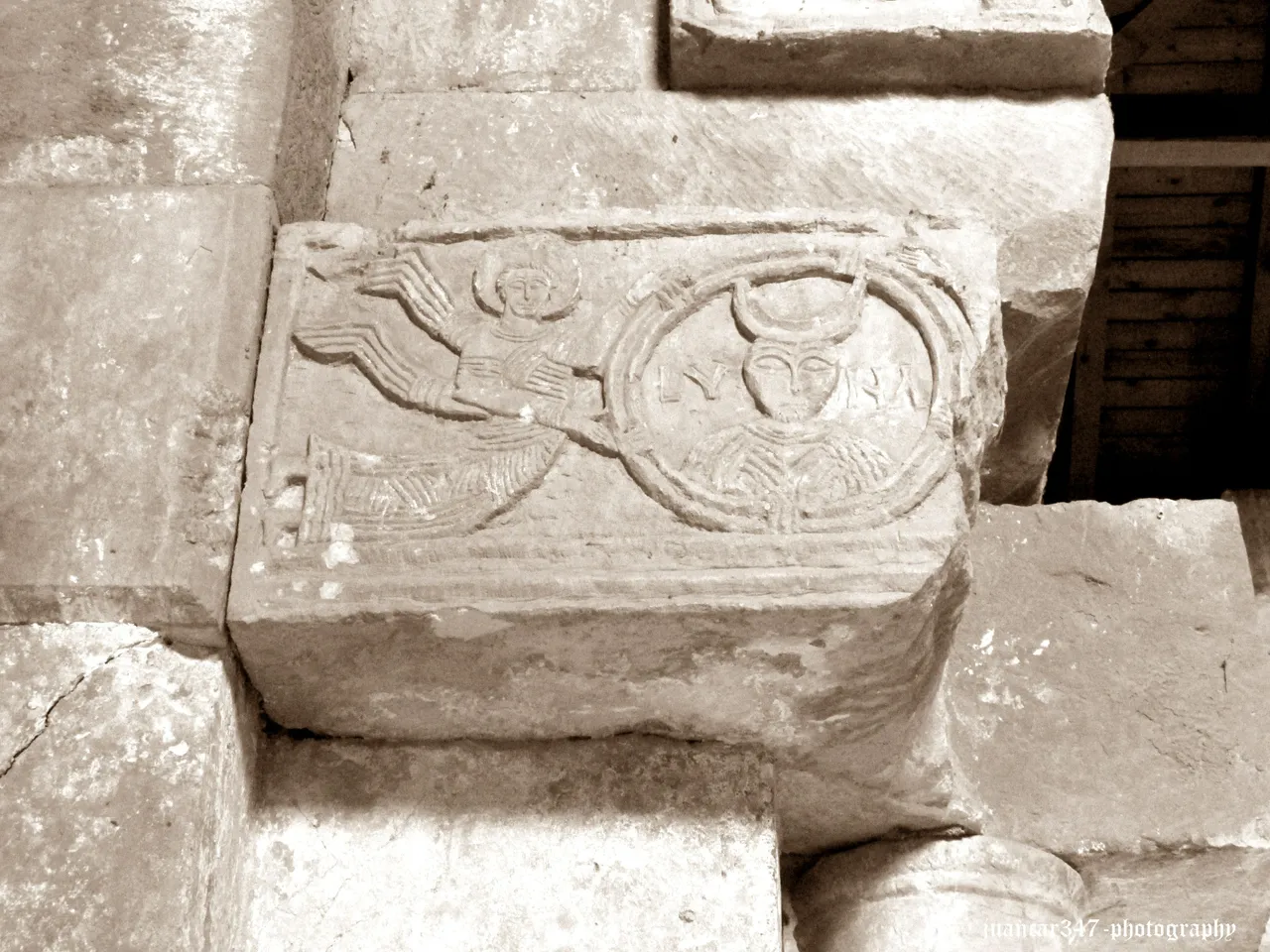
To speak of the Visigothic period, means, I have no doubt, to speculate with a trip back in time to the heart of a lost epoch in History, in which the socio-political and factual estates that were to increase were beginning to be seen severely, but always with the same associates, during the so-called High and Low Middle Ages: the Crown and the Church.
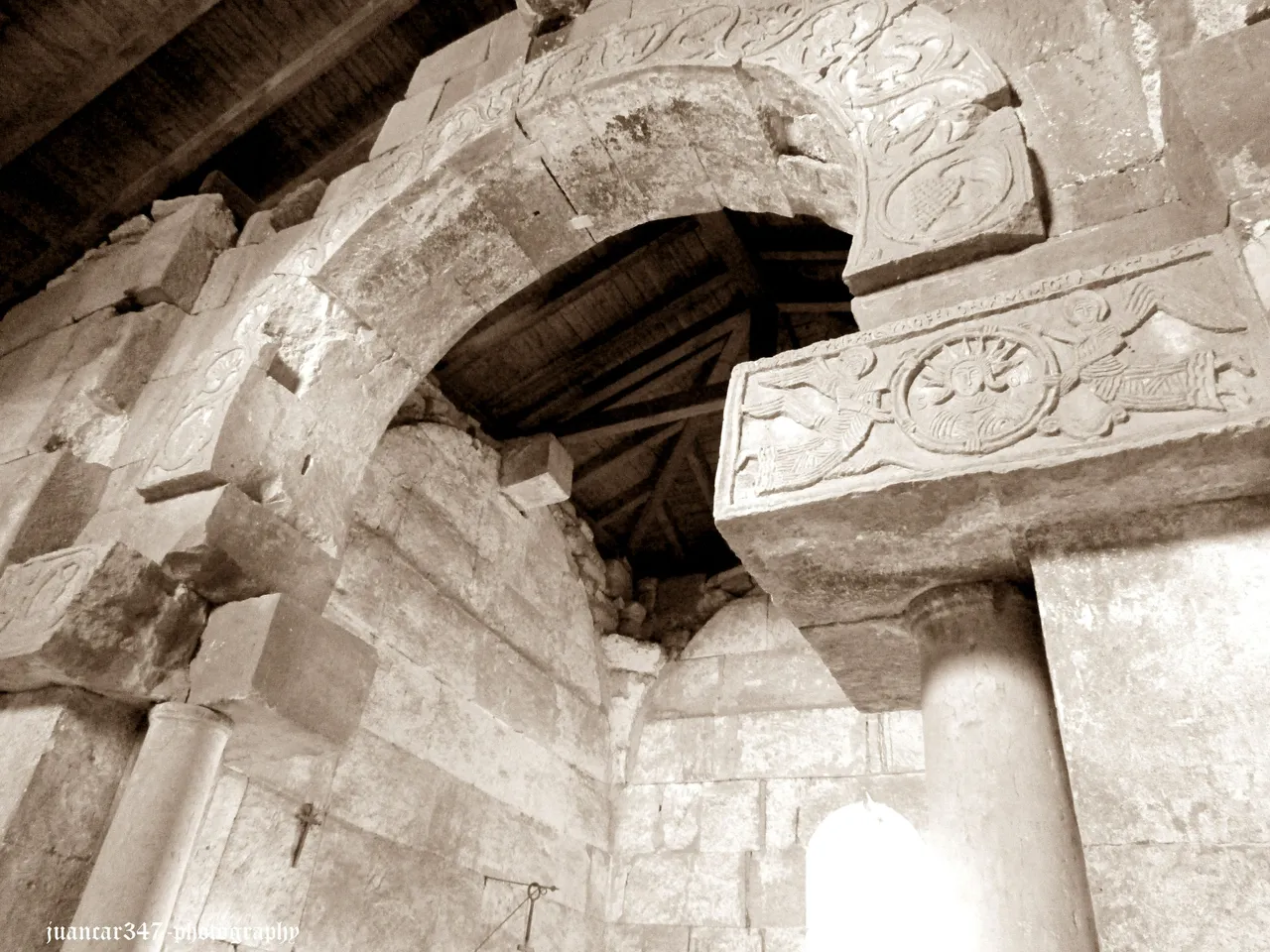
So, my photographic proposal is in monochrome, on this occasion, because I consider that it perfectly represents that era and that melancholic vision of the Visigothic spiritual world, which for centuries remained the visible head in Spain of an Ecclesia in full expansion.
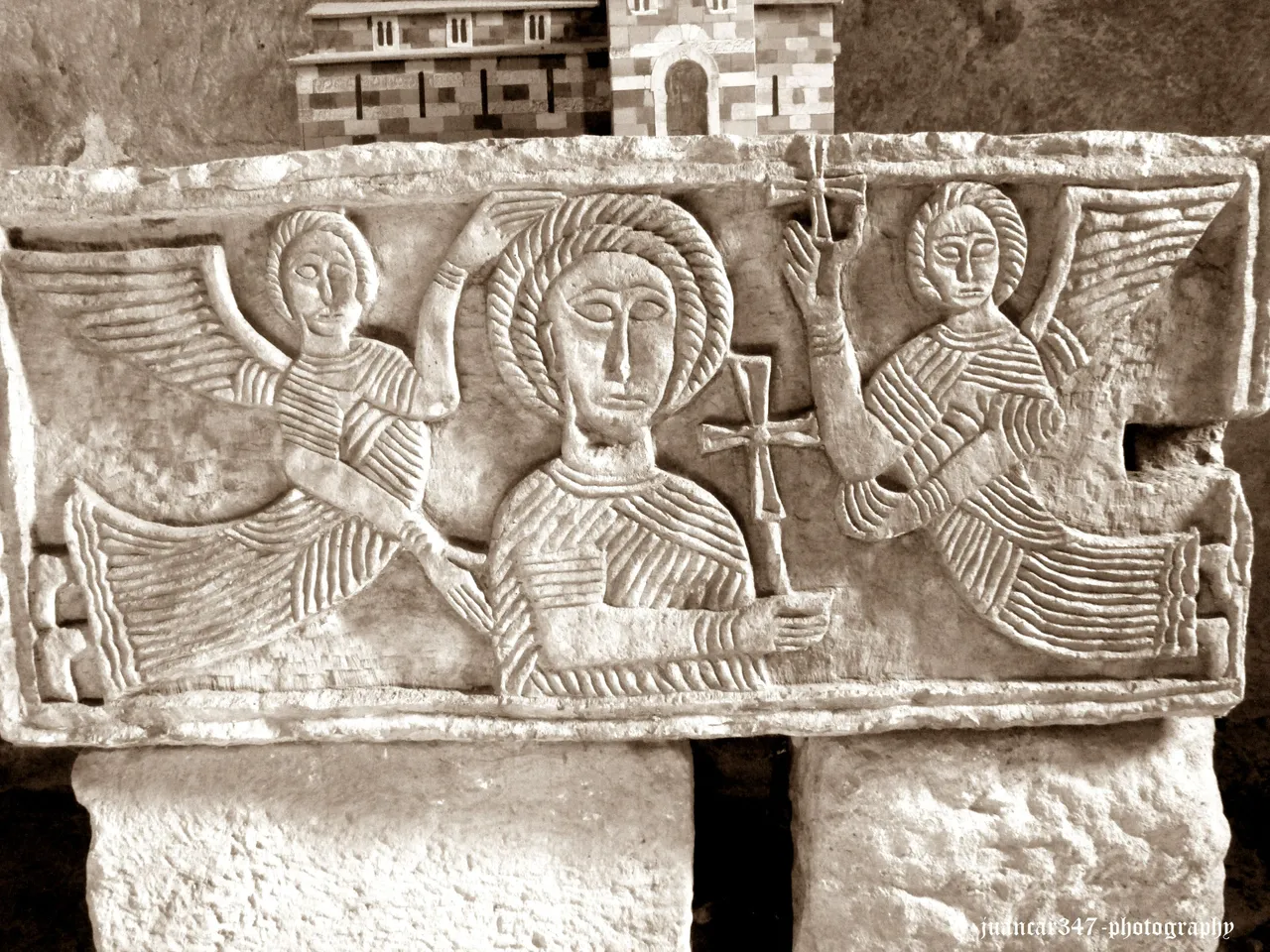
The remains of the Visigoth church of Quintanilla de las Viñas are not, perhaps, the most spectacular, since barely a small part has been preserved, but they can be considered significant enough, because they gather, in so little, much of what It characterized, precisely, the Visigoth churches and monasteries settled in the Iberian Peninsula.
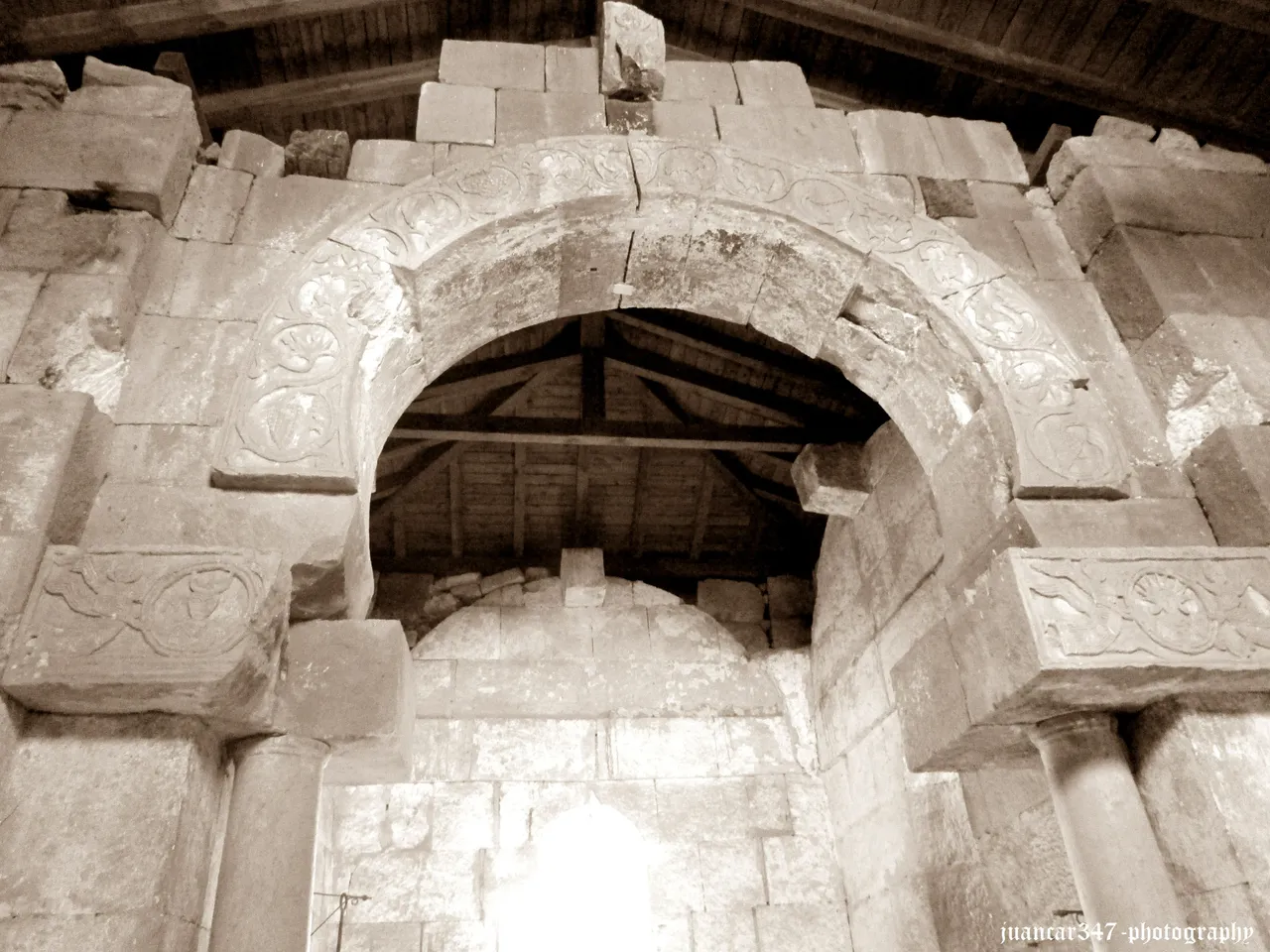
It had, like all the churches of its kind - where it is verified that the Visigoth master builders already had certain mathematical knowledge, including the so-called golden or golden number - a basilica-shaped plan, or if you prefer, in the shape of a Greek cross, with four equal arms.
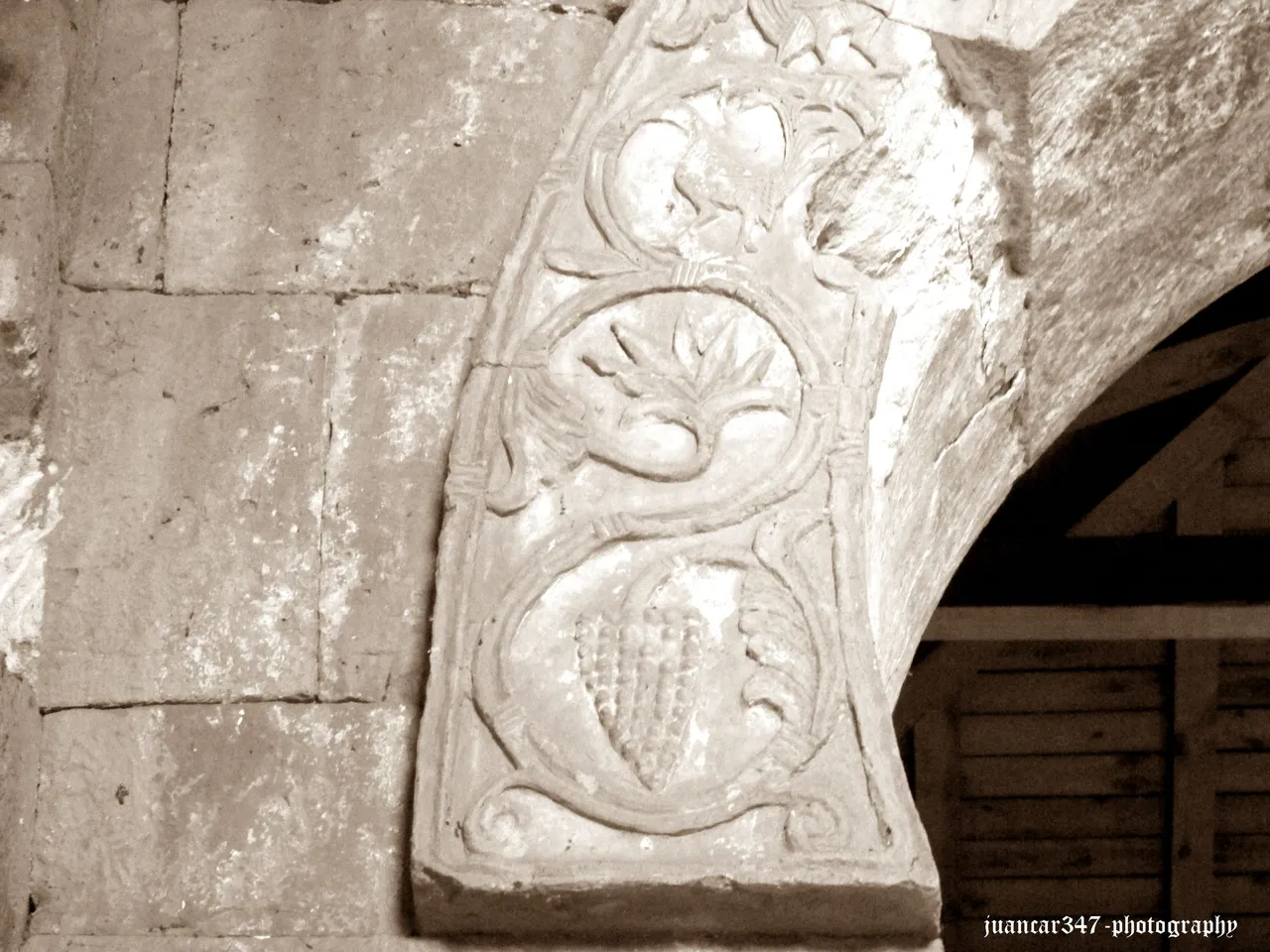
In their execution, they also used modillions, arcosolios, capitals and columns as key elements of the building's framework and in them, as would happen centuries later with other later architectures, they developed, roughly, their spiritual vision, in the form of decorative elements that they always obeyed the same motives.
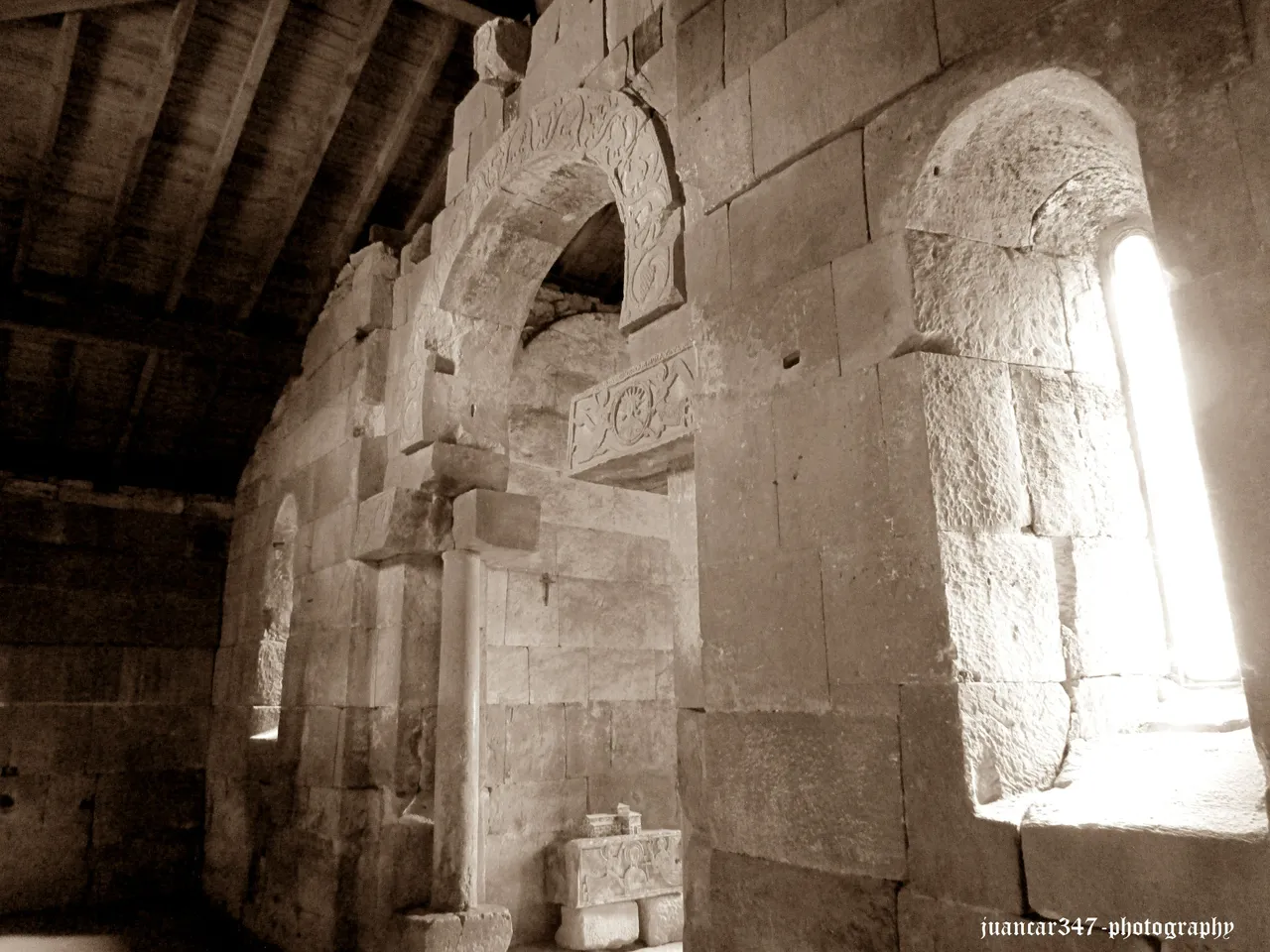
Some reasons, where the presence of two ambivalent realities is confirmed, the Sun and the Moon -antagonic representatives of the ancient cult wars between the supporters of the Matriarchy or Lunar Cult and the supporters of the Patriarchy or Solar Cult- the birds, representative, for the general, of the human soul, as well as the use also of the bunch of grapes -symbolically the blood of Christ, sipped by the priest in the Eucharist and even beyond, a reference also to his lineage, which is called in some areas as ‘The Vineyard’- griffins and lions.

All these representations, as well as the presence of primitive crismones -whose initials, in this particular case of the Visigothic remains of Quintanilla de las Viñas, pose a challenge for researchers, who pretend to see in them the first initial of biblical quotations or even the initials of the Magister Muri who directed the work - can be seen with the naked eye, on the outer border that borders part of the remains.
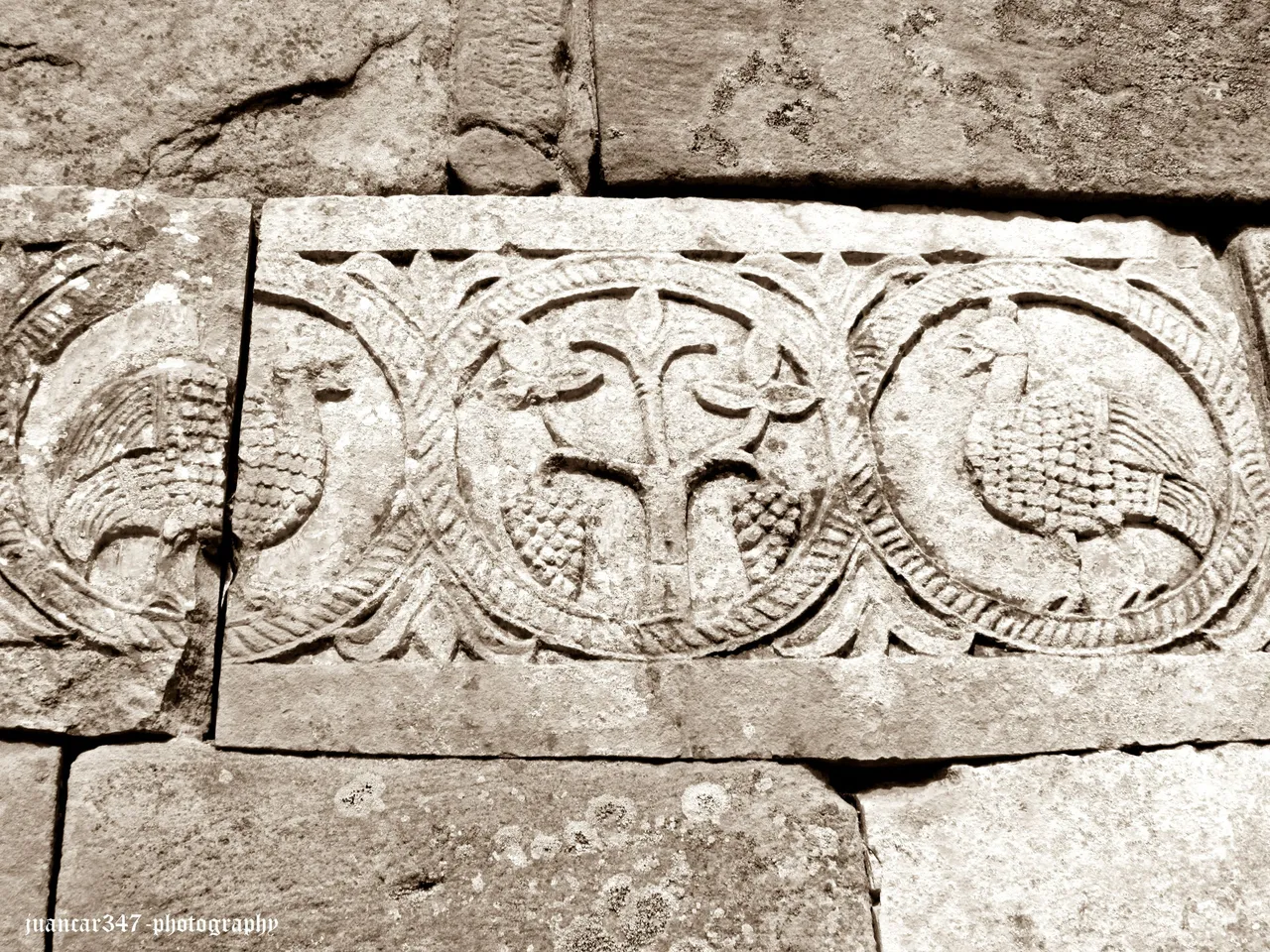
Another type of representation, inside, is the representation of angels that seem to highlight a sanctified figure, whose invocation was probably the one to which the church was originally intended and is a magnificent example of Visigoth sculpture, which in the Ultimately, it could be added that it served as a precedent for later pre-Romanesque and Romanesque temples, which from the ninth century began to constitute what modern historians began to call, at some point, as the architectural arts of Christianity par excellence.

NOTICE: Both the text and the accompanying photographs are my exclusive intellectual property and therefore are subject to my Copyright.
